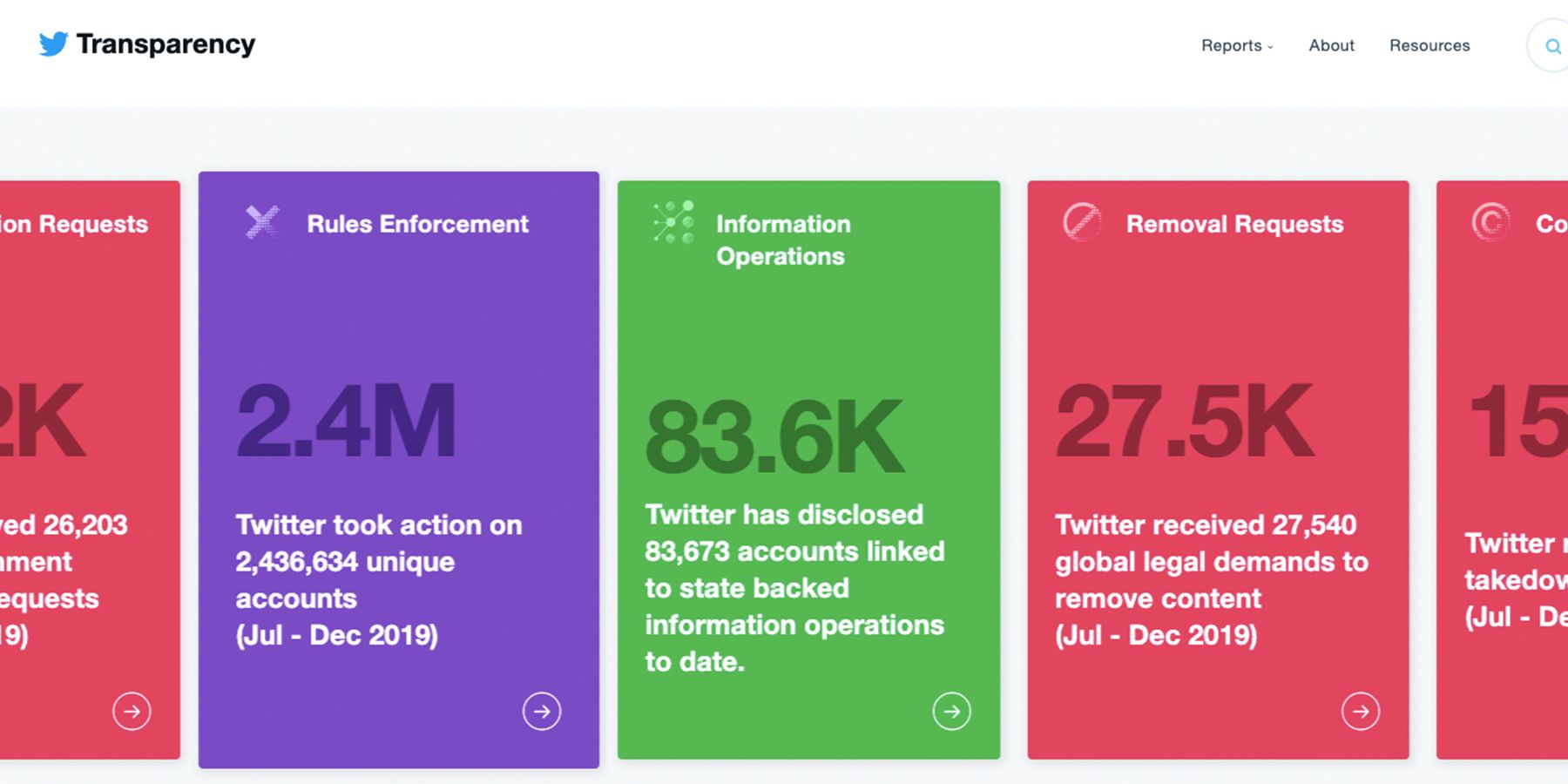Twitter has introduced a new website to showcase transparency toward its practices and enforcement of its rules online. The new website, aptly titled the Twitter Transparency Center, is a comprehensive archive of reports, publicly exchanging information to the world to protect and bolster the open internet. The Transparency Center offers a six-month report of the metrics and methodology behind the enforcement of its rules, as well as a full archive of all previous reports to date. Additionally, the new site provides detailed statistics in regards to government data requests from countries around the globe.
Twitter released one of the social media industry’s very first transparency reviews back in 2012. During that (seemingly simpler) time, its goal was to provide the public with insights twice a year into the government pressure on people who used the site, whether through censorship or requests for account data. As the user base grew, Twitter focused more on enforcing its own rules and combating global state-backed information operations. For the first time, Twitter is expanding the scope of its reports with more granular data than years past, particularly how it enforces its own rules and determines violations for suspensions or bans.
According to the Twitter blog, the new Transparency Center website now includes all of the aforementioned data in one place, and includes an arsenal of tools to help the general public better understand the information. These tools include data visualizations to compare trends over time, country comparison modules, and new tooltips to explain key terms Twitter uses in its reports. For example, a major focus of these reports is Information Operations that the tooltip describes as attempts to manipulate Twitter by state-backed entities. The archive of these attempts is continuously updated as these accounts are removed and currently spans over nine terabytes of media containing over 200-million tweets. Journalists and researchers around the world can study this archive freely as an industry-first resource. Still, that archive is a small piece of the transparent pie available to the public. Twitter is also taking every opportunity to highlight the actions of law enforcement and governments, and how they are impacting people on Twitter.
Not Only More Transparent, But Clearer Data

Twitter states that with the launch of the Transparency Center, it is focused on increasing awareness and understanding about how its policies work, as well as its practices surrounding content moderation and data disclosures. That includes the enforcement of its rules. As a result of increased focus on more granular policies, improved reporting tools, and studying more data across distinct areas, Twitter has seen a 47-percent increase in locked or suspended accounts for violating its rules, since the last report was published. So not only is Twitter sharing the measures it is taking to limit violations like abuse and graphic content, but it is also sharing the results of such policies.
Twitter’s focus on its own rules shows remarkable data in regards to the regulation of accounts, but another huge spotlight for these reports has always been on government requests for information. According to the blog, there has been a 21-percent increase in information requests from governments and law enforcement agencies around the world, since Twitter’s previous report was released. Of those requests, the United States continues its reign as holding the highest global percentage (26%) of legal requests for account data.
That being said, Twitter is protecting people in another way by frequently objecting to requests to ‘unmask’ or identify anonymous or pseudonymous accounts from non-government entities. During the last reporting period in the U.S. alone, Twitter objected to twenty-three unmask requests, litigated six of them, and won four (it lost one and another is still pending). Once again, transparency shows the good and bad from both sides of the request, but it’s encouraging to see such a large social media company fighting on first amendment grounds for such a small sample of its base.
Whether or not you are interested in how Twitter enforces its rules, or denies requests from Japanese copyrighters, the bi-annual transparency report is always available. The decision to compile and streamline the reports, along with interactive data tools and archived information, makes the new Twitter Transparency Center a research tool for years to come.




